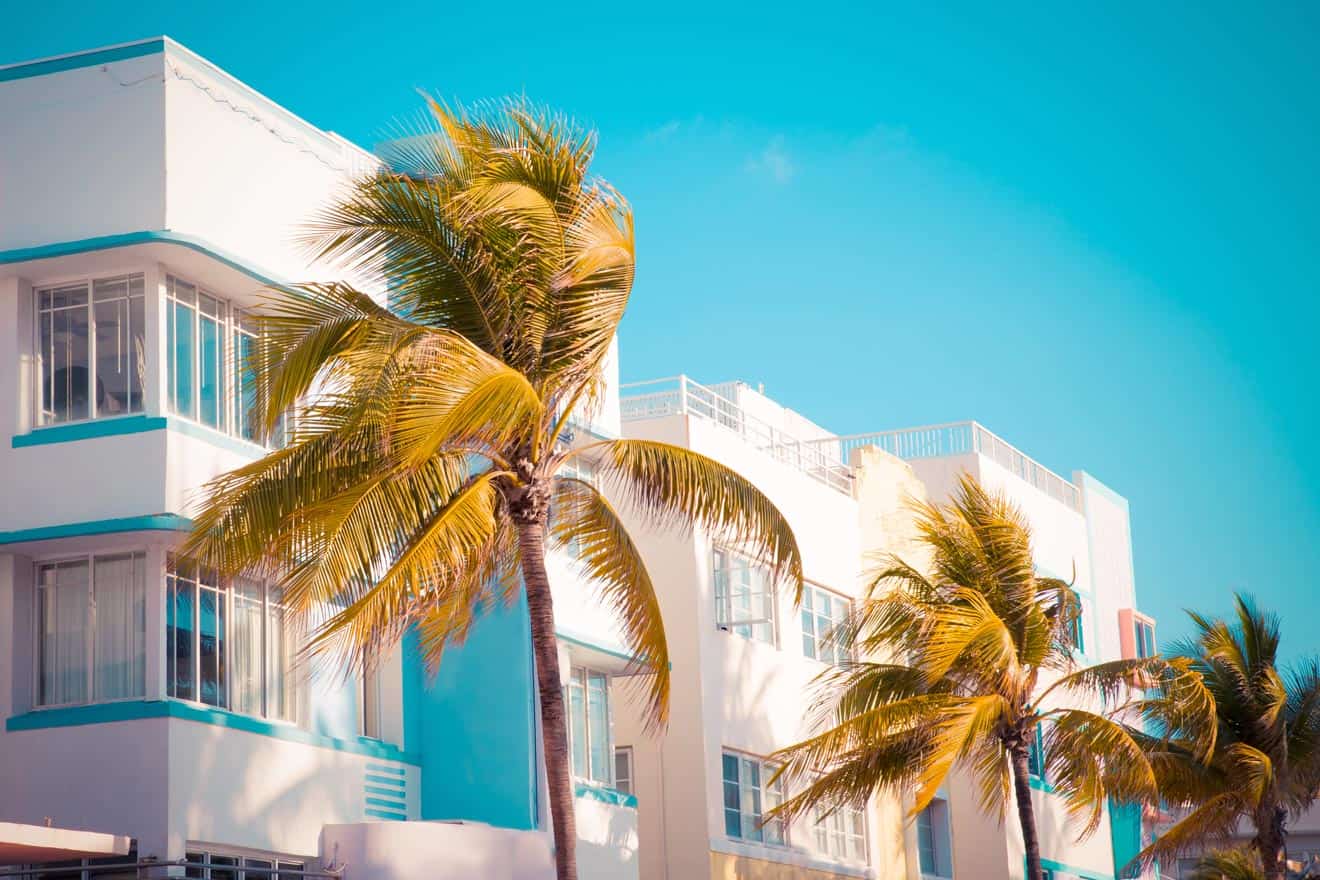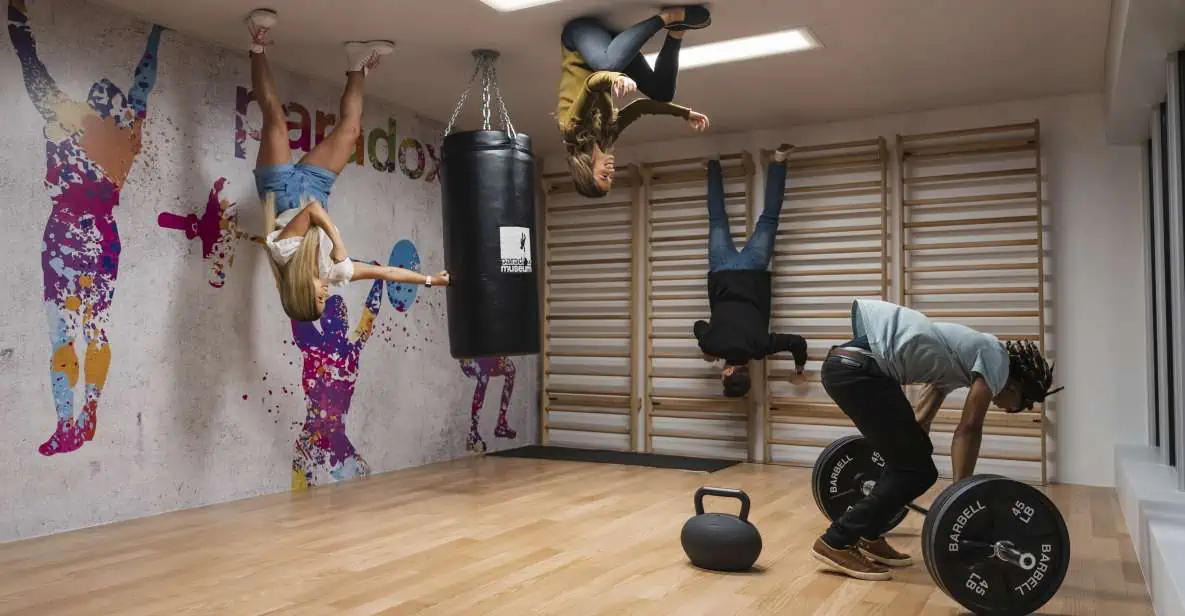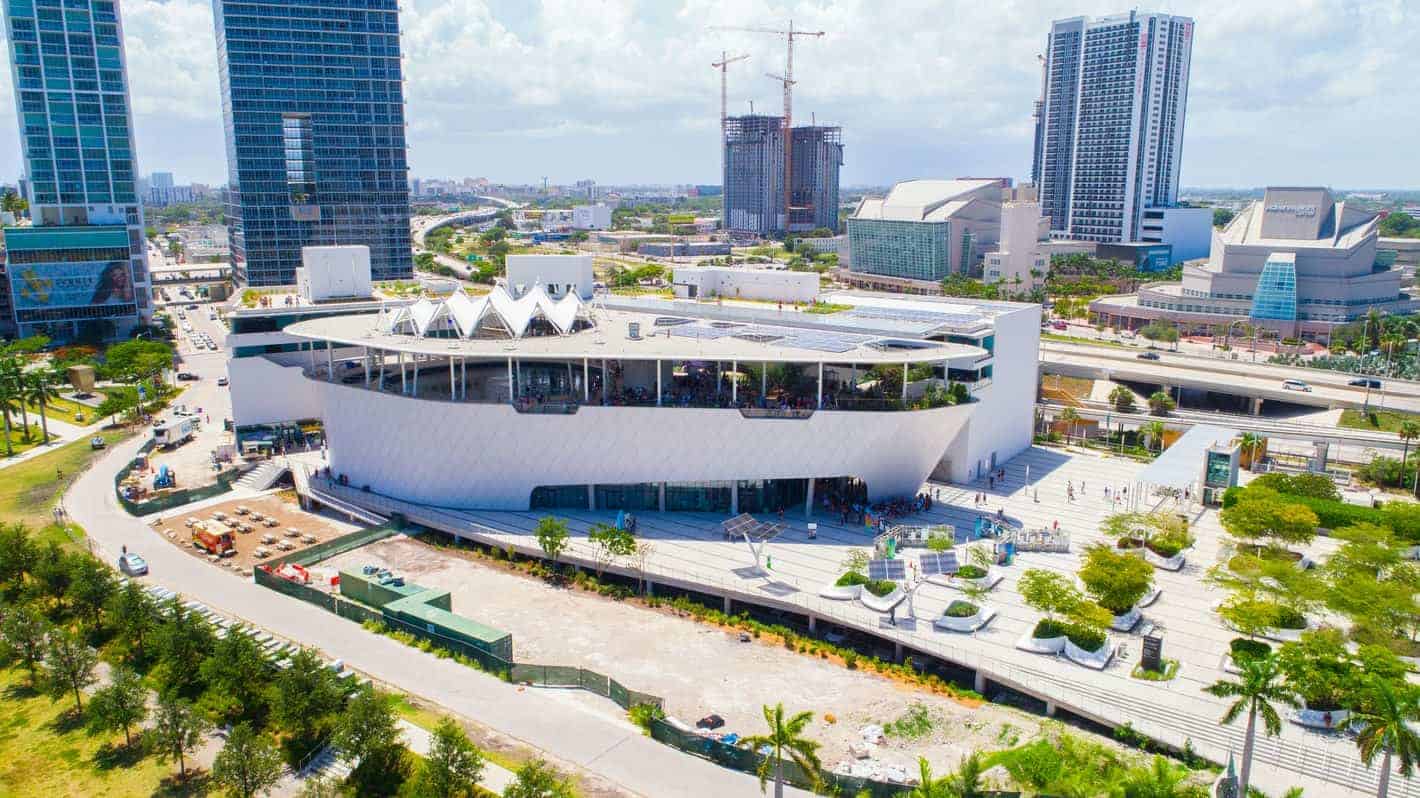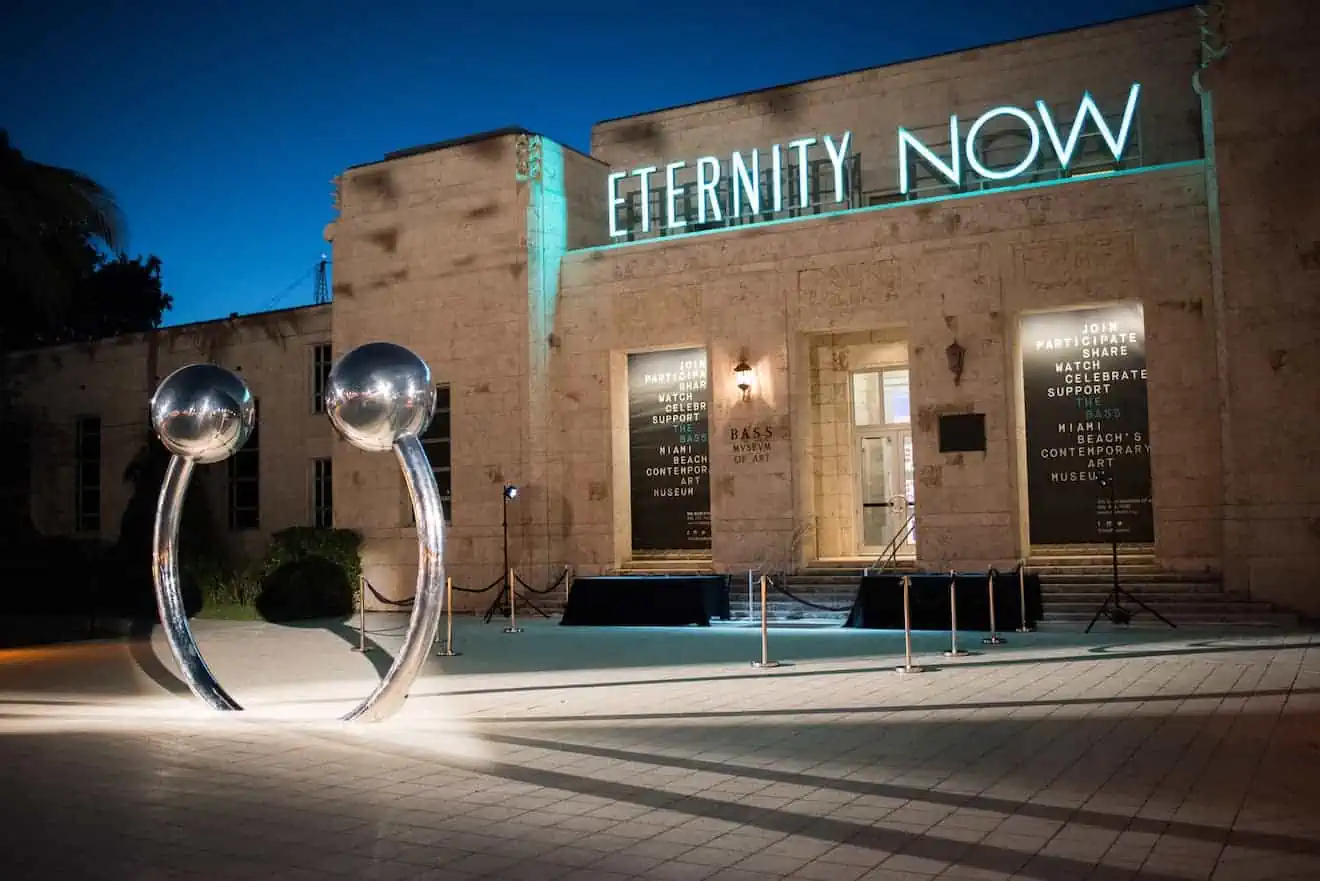Those who do not know their geography well, tend to identify Miami with Miami Beach, also due to the rather common idea linked to luxurious city beach life that is sold to us by the media and popular culture. In reality, although very close, the two cities are quite distinct.
Moreover, this is not the only mistake that is made: when we talk about Miami Beach, we often refer exclusively to its most famous and touristic area, South Beach. This too is not accurate, because Miami Beach is actually composed of three different municipalities: in addition to South Beach, there are also Mid Beach (better known as Central Beach or Middle Beach) and North Beach. These two areas are not as interesting as South Beach, but they still deserve to be mentioned and discovered for what they have to offer.
While we have spoken extensively about the neighborhoods of Miami with various insights, this article is designed to give a complete overview of what to see in Miami Beach, this long strip of island that goes from South Pointe Park Pier to Bal Harbour, stretching for about 10 miles just in front of Biscayne Bay and the city of Miami itself.
South Beach
Let’s start with South Beach, the part of the island that most obviously shines its own light, and the main reason why it’s worth visiting Miami Beach. There is much to say about it, starting with the history of this place, which began as a fruit plantation and in a short time became one of the world’s landmarks for luxury tourism, thanks to its vocation for hotels and the irresistible charm of its beaches.
Things to do in South Beach
There are so many attractions to visit and things to do that we thought it best to dedicate a specific article to the topic: things to do in South Beach. However, for a short summary, we can point to the following points:
- The beach: as you read in the article dedicated to all the beaches in Miami, South Beach is home to the most representative of the city, Lummus Park Beach. White sand, calm, warm and crystal-clear sea, the iconic colorful lifeguard huts, girls in bikinis and tanned guys showing their muscles on the beach, palm trees waving framed by Ocean Drive … in short, Lummus Park Beach is a must for those who come to South Beach;
- Ocean Drive: the parade of palm trees and colorful Art Deco hotels that characterizes this short stretch of road overlooking the waterfront is a sight not easily forgotten. Whether it’s day or night, there’s always a reason to take a stroll down Ocean Drive. If it’s not to spend a few hours in bars, it’s to watch the quirky people walking on the sidewalk or the guys behind the wheel of luxury cars speeding down the street;
- Art Deco Historic District: the Art Deco hotels are not just on Ocean Drive, but are scattered around the surrounding streets as well, especially Collins Avenue and Washington Avenue. This is why South Beach is referred to as the Art Deco Historic District, an entire neighborhood recognizable by its unique architectural style. The historic buildings – built in the late 1930s in the European style that was so much in vogue at the Exposition Internationale des Artes Décoratifs in Paris – in most cases have been restored and now appear to our eyes in all their tropical splendor. There are so many that we have created a guide with a map so that you don’t miss the best ones: you can find it in our article on Art Deco in Miami.
- Lincoln Road: South Beach is also one of Miami’s (and Miami Beach’s) shopping hotspots. The number of stores is endless, but those who want to plunder the best shelves should go to Lincoln Road, where the flow of people passing from store to restaurant to another store is never-ending!
These 4 are the main reasons why it is worth visiting South Beach. Of course, they are not the only ones: if you leave the main tourist circuits you will also find the dramatic monuments to the memory of the victims of the Holocaust (Holocaust Memorial and Memorial Wall), museums, and art galleries (Bass Museum, The Wolfsonian-Florida International University, etc..) and a pleasant Hispanic-Mediterranean oasis (Espanola Way): in short, South Beach is a place to be discovered!
How to get there
A visit to South Beach is facilitated by its location: in fact, thanks to the MacArthur Causeway – the bridge that crosses the canals of Biscayne Bay – this is the easiest area of Miami Beach to reach from Miami, more precisely from the north end of Miami Downtown. If you don’t have a car, as you can read here, you can always use public transport, but in my opinion, it is not the most convenient way to get around.
Places to stay
For specific advice on accommodation in this area of Miami Beach, read our in-depth article on the best places to stay in South Beach.
Things to do in Mid Beach (Central Beach)
Collins Avenue, in South Beach, preserves some beautiful historic hotels. The avenue is not limited to this part of Miami Beach but cuts the entire island in half. At 23rd Street, shortly after Collins Park (which, with its Bass Museum, marks the end of South Beach), you enter Mid Beach, the central part of the island and the narrowest.
At the height of 26th Street, the road branches off: while the outer part (Indian Creek Road, the one that runs along the canal) is more intended for the flow of cars, the inner part of Collins Avenue is more suitable for walking around to see the hotels and luxury apartments that characterize the area.
Although to a lesser extent than in the southern part of the island, the main reasons for interest in Mid Beach are once again the luxury hotels, although here the architecture changes. Miami’s social life in the years of the Second World War took place here and the splendor of the villas and residences that are hidden among the tall buildings testifies to this.
Just along the inner stretch of Collins Avenue, between 26th and 44th Street, before the street narrows again, are the most interesting attractions, namely the futuristic buildings of the Faena District.
In addition to this, there is another historic district with very specific characteristics: the Morris Lapidus District that, as we will see, takes its name from an important architect active in Miami, the interpreter of MiMo (Miami Modern), an architectural style from the fifties that reworked certain stylistic elements of Art Deco.
Faena District
In my opinion, although a bit sterile, this is the most charming area of Mid Beach. The Faena District covers a rather small area of Collins Avenue, from 32nd to 36th Street, but is able to strike anyone with its ultra-contemporary tasteful concept, conceived by hotel industry giant Alan Faena, an Argentine entrepreneur of Jewish descent.
Developed by the OMA architectural firm starting in 2011 and completed in 2016, the Faena District is one of the most innovative neighborhoods in all of Miami, and it doesn’t take long to see why. Strolling down the main street, you will see buildings in MiMo style that have been extensively redesigned in a contemporary way.
The buildings are intended for a wide variety of uses: luxurious condominiums, a giant resort, an innovative and multi-purpose cultural center, stores, a parking lot, and a commercial center, all in an urban context where the color white stands out from the rest.
- Faena Forum: the huge building, by Rem Koolhaas, is divided into two sections. The one more visible from the street is cylindrical in shape and was designed for art exhibitions; behind it is another cubic section, intended for conferences and hotel accommodation. Both external walls of the building are covered with numerous windows of various shapes, which make the appearance of the forum really extravagant.
- Faena Hotel Miami Beach: right in front of the forum is the magnificent Faena Hotel, which stands out on Collins Avenue with its towering white façade and aquamarine terraces. As if to confirm the luxury of its exterior, the hotel has luxurious rooms, a theater, and a secret that many people don’t know about. If you go to the sea-side of the hotel, on the Miami Beach Boardwalk, to your amazement you will notice the golden skeleton of a mammoth, visible behind a glass case, in the hotel garden. This installation, dated 2014, and the work of artist Damien Hirst bears the name Gone but not Forgotten. As is well known, the artist is no stranger to provocations in the field of art, and this one doesn’t seem any less so: if I haven’t misunderstood, those are really the bones of a mammoth!
- Faena House: right next to the hotel is Faena House, a building with a completely different style of architecture and of “more modest” dimensions: according to the project, this condominium should act as an annexe to the hotel, to favor those guests who prefer the domestic comfort of a house to the luxurious atmosphere of the resort. In reality, of course, the Faena House condominiums are also prestigious, but we’ll let its exterior suffice: architect Norman Foster has created a futuristic 19-story aerodynamic building with a curved terrace as its pivotal element. A must-see!
- Faena Bazaar: this building is one of the most recent and takes the place of the Atlantic Hotel, from which it takes on some Art Deco characteristics, renouncing the hyper-contemporary splendor of the buildings that surround it. Inside there are luxury stores and boutiques, galleries and exhibition spaces for artists. On the top floor is an event space. A kitschy note: the red lips in the shape of a kiss that invade the white facade.
- Faena Park: in Miami Beach, even the parking lots are works of design! A bit like 1111 Lincoln Road, Faena Park also features sophisticated architecture. The boxy structure and ubiquitous texture with non-functional elements such as MiMo-style ascending cheese holes make it a building that is anything but merely functional!
- Casa Faena: hidden among all these futuristic concept buildings, Casa Faena – not to be confused with Faena House – is the exception that proves the rule. The building is owned by Faena, but the style is completely different: you’ll feel a bit out of context when you see its elegant and dignified red and white façade, with decorative elements in Mediterranean Revival style and a retro look close to Art Deco. The sign of the original Claridge Hotel testifies to the fact that the architectural work here was conservative: perhaps Faena’s firm wanted to show visitors to the district what this area of Mid Beach used to look like.
Morris Lapidus/Mid-20th Century District
This area of Mid Beach (or Central Beach) extends between 44th and 53rd Street, but in fact the most famous attractions are both located in a space of just 0.2 miles, between 4441 and 4525 Collins Avenue. I’m talking once again about two hotels: the Fontainebleau and the Eden Roc, two masterpieces by Morris Lapidus, the most important of the architects who conceived and interpreted the MiMo style in the Fifties and Sixties.
- Fontainebleau: before becoming a paradise for VIPs and wealthy luxury vacationers, this area was home only to the villas of wealthy Americans who came here to spend the winter. Thanks to the monumental project by Morris Lapidus, in 1954 Fontainebleau took the place of the residence of the entrepreneur Harvey Firestone, raising the bar of luxury even higher and, in a short time, becoming a point of reference for all the hotels in Miami Beach. It was in fact defined by the journalist Howard Kleinberg as “the most favored, most adored, most panned, most reviled hotel in Miami Beach“: the guest list, full of VIPs and celebrities of the time, proves it. This majestic, gigantic, semi-circular building has its back to the street and is, in essence, the culmination of MiMo style: it took up some Art Deco stylistic elements in a more ambitious and excessive fashion while enlarging the dimensions of the buildings and leaving out the eclecticism of the external decorations.
- Eden Roc: the main competitor of the Fontainebleau is located practically next door to it. This hotel was also designed and built by Lapidus and became a reference point for the protagonists of the cinema and musical scenes of the fifties, especially the Rat Pack: in the luxurious interior rooms of the hotel, in the tropical garden, and by the pool, in fact, Frank Sinatra and Dean Martin ruled. The aquamarine facade of the Eden Roc is less grandiose than the Fontainebleau but more pleasant, starting with the retro-style sign.
Beaches
Being a continuation of it, the long strip of beach in Mid Beach is not so different from the ones at Lummus Park in its naturalistic characteristics, but you must take into account that there are hotels and condominiums behind the boardwalk shaded by tropical vegetation.
How to get there
Getting to Mid Beach by car from South Beach is the best and easiest way: just keep driving north on Collins Avenue, leaving Collins Park behind. If you want to arrive directly from Miami without going through South Beach, you will have to go to the Design District area and use the Julie Tuttle Causeway (I-195 E).
If you’re traveling by transit, you can use the Collins Express, a free trolley system that allows you to move between South Beach, Mid Beach, and North Beach with three different interconnected routes. Alternatively, you can use the 120 line, departing from Downtown Miami.
Places to stay
For my recommendations on where to sleep in this area of Miami, follow the link below:
Our suggestions on the best places to stay in the area
Things to do in North Beach
When Indian Creek and Collins Avenue cross W 63rd Street – the other street besides 41st that connects the two parts of the island – it means that from Mid Beach we are about to move to North Beach, the northern area of Miami Beach. Here too the long line of skyscrapers, hotels and luxury condominiums continues, but we also find a greater variety in the type of beaches and 3 historical districts where it is interesting to look for some examples of the MiMo style, some bizarre others majestic.
The island in this section is wider than in Mid Beach, but Collins Avenue remains the guideline to follow to see the areas of main interest, until the north end of the island (Surfside and the exclusive Bal Harbour), where there is a lower density of buildings and a greater number of private residences.
There are basically 3 historic districts where you can find the best MiMo-style buildings in North Beach:
North Beach Resort Historic District
As you can tell from the district’s name, this is where North Beach’s most exclusive historic beachfront hotels are located.
Driving your car at low speed along Collins Avenue you will undoubtedly notice the historic Sherry Frontenac with its unmistakable illuminated sign (6565 Collins Ave), the whimsical Casablanca, with its inevitable and whimsical references to African traditions (6345 Collins Ave), and the futuristic Carillon (6801 Collins Ave), towering over the street on one side and the beach on the other.
One of the most significant hotels in the area was the Deauville Resort (6701 Collins Ave), a streamlined, sporty-looking structure, but in recent years it has been affected by both Hurricane Irma and a fire and is now under renovation.
Normandy Isles District
71st Street, going westward, leads to Normandy Isles, a small neighborhood that seems not to have totally given way to tourism: in these parts you can breathe a Latin atmosphere, given by the presence of many Argentine emigrants who came to live here and opened their businesses.
The symbol of the neighborhood, whose streets curiously have all the names in French, is a monument in Hispanic style located in the central square: the Vendome Fountain. The address to enter in your map guidance to see it is 7802 Rue Vendome.
North Shore District
This is the most residential part of North Beach (from 73rd Street to 87th St): diminishing mansions and residences with design details take over. Here we see the North Beach Bandshell (7275 Collins Ave), an amphitheater dating back to 1961 and renovated in 2011.
The importance of this place is linked to its social role: residents of the area spent their evenings here watching concerts and entertainment in the years when Miami Beach was living its golden age. However, not all the most curious hotels and buildings are located on Collins Avenue.
If you still haven’t figured out what this MiMo style is all about, drive to 620 75th St, where the Temple Menorah is located: let yourself be struck by the more joyful side of this architectural concept, enjoying the curious yellow tower of the temple, with the “cheese holes” typical of the Miami Modern style.
Beaches
The beaches at North Beach are perfect for those looking for more tranquility than South Beach. Not only that, compared to Mid Beach, North Beach has a little more choice in terms of beach life.
The best news is that for a long stretch, between 79th St and 87th St, there is a (relatively) untouched beach: the North Shore Open Space Park. Unique in all of Miami Beach, this beach has rightfully been included in my article on the best beaches in Miami, so if you want to know more check out the link above.
To the north of the North Shore, Open Space Park lie the beaches of Surfside and Bal Harbour. While at Surfside the beach is narrow and less uncrowded due to less tourist exposure, at Bal Harbour the private beaches of luxury hotels and resorts return.
How to get there
The directions to reach North Beach from South Beach are the same as for Mid Beach: Collins Avenue will take you to the northern edge of the neighborhood, among the luxury residences of Bal Harbour. If you’re coming from Miami, however, you’ll access the island via Normandy Isles, which can be reached via NE 79th St., the only road in the city.
As far as public transportation is concerned, please read the information you have read on Mid Beach, as both the 120 line and the North Beach Loop of the Collin Express trolleys cover the area extensively. From South Beach to the North Beach Resort Historic District, it takes about 40 minutes by transit, but the bus takes a little less time than the trolley.
Places to stay
For my recommendations on where to sleep in this area of Miami, follow the link below:
















